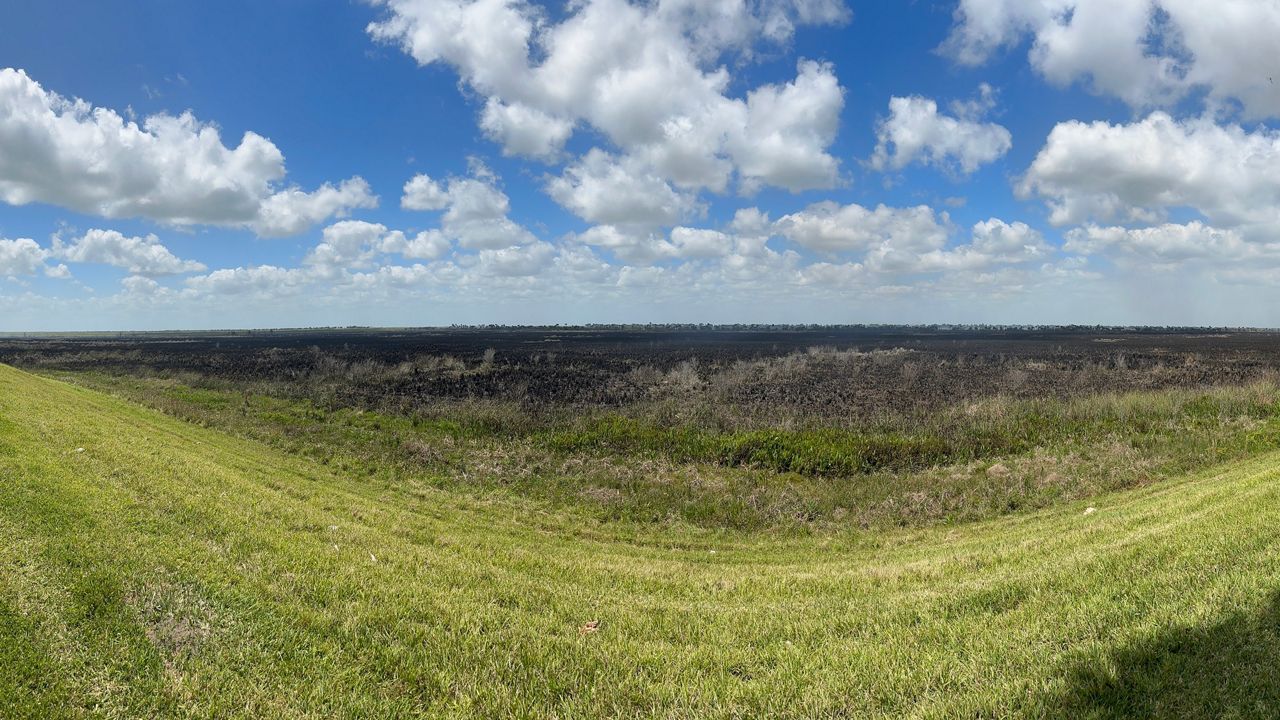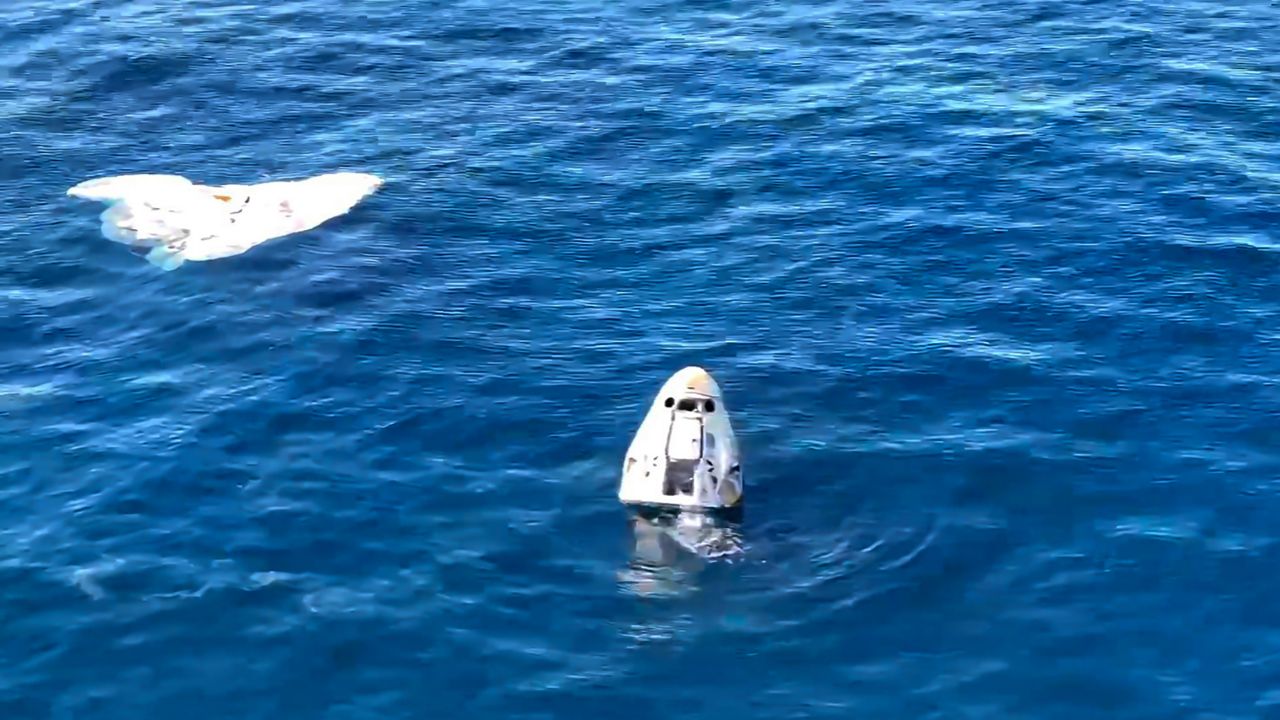The year 2022 is poised to mark a number of important milestones for NASA’s Artemis program, a wide-ranging undertaking to bring humans back to the Moon.
A wide array of robotics, CubeSats and landers are bound for the Moon throughout the year with the launch of the Space Launch System rocket and the Orion crew capsule being the notable highlight.
What You Need To Know
- MSolo missions are designed to help search for water ice on the moon
- These projects will use off-the-shelf mass spectrometers that have been converted for use in space
- The first of these mission is set to launch in late 2022
But as the U.S. and other nations who are party to the Artemis Accords work to bring people back to the lunar surface, important research is being done into how to make the moon more habitable. One important place scientists say they need to start: finding frozen water.
A women-led team at Kennedy Space Center is busy working to convert off-the-shelf mass spectrometers — devices used to analyze molecules — into tools that can function on the Moon. The projects are part of the program dubbed Mass Spectrometer Observing Lunar Operations (MSolo).
“Water is that really important resource on the lunar surface and this instrument is designed and can detect low levels of water,” said Dr. Janine Captain, the principle investigator of MSolo. “This instrument is designed and can detect low levels of water. And so, we’re going to be able to measure water, if it’s there where we land on the moon.”
The MSolo missions are a part of NASA’s Commercial Lunar Payload Services (CLPS) initiative. That program is designed to send two deliveries of science and technology demonstrations to the moon each year.
Services were originally set to start in 2021, but those announcements were made prior to the outbreak of the COVID-19 pandemic.
The Mass Spectrometer Observing Lunar Operations (MSolo) and The Regolith Ice Drill for Exploring New Terrain (TRIDENT) will work in tandem to bring lunar dirt to the surface and study the molecules to see if there's water at that site. Dr. Janine Captain talks about the history. pic.twitter.com/ijE4iywe5T
— Will Robinson-Smith (@w_robinsonsmith) March 25, 2022
Water, Water… Where?
One of the important things that Captain and her colleagues at Kennedy Space Center had to figure out for these lunar water missions is where they will conduct the science.
Dr. Jackie Quinn was part of the group that helped make that determination. She’s the project manager for the Polar Resources Ice Mining Experiment-1 (PRIME-1) mission. It’s one of four planned undertakings from NASA that will feature the MSolo technology.
PRIME-1 will launch on board Intuitive Machines’ Nova-C lander on the IM-2 mission, now targeting a 2023 launch date aboard a Falcon 9 rocket, according to the company.
The mass spectrometer works with The Regolith and Ice Drill for Exploration of New Terrains (TRIDENT). The drill, which will be featured on both the IM-2 and the Volatiles Investigating Polar Exploration Rover (VIPER) missions, drills into the lunar surface. The dirt or regolith that’s brought up is then examined by the mass spectrometer for evidence of frozen water.
Quinn said in order to find places for these missions, they were looking for an area they describe as a Goldilocks Zone, somewhere that has all the right characteristics needed to find evidence of frozen water ice below the surface.
As @NASAArtemis prepares to bring humans back to the surface of the Moon, two important things to figure out are how much water is on the Moon and where it is.
— Will Robinson-Smith (@w_robinsonsmith) March 25, 2022
Dr. Jackie Quinn explains how they landed on Shackleton Ridge as an ideal place to explore. @MyNews13 @NASAKennedy pic.twitter.com/2KVoWIOGjj
They landed on an area near the Moon’s southern pole called the Shackleton Connecting Ridge, near Shackleton Crater. They pulled date from sources like the Lunar Reconnaissance Orbiter, which provided thermal maps of the region as well as slope data, which shows the incline of the lunar surface.
They also needed to find a spot that had good communications back to Earth and enough sunlight that will keep the instruments powered.
“We started looking at some sites that we thought would be favorable for the mission and we worked with our Commercial Lunar Payload Services (CLPS) provider, which is Intuitive Machines. They’re out of Houston, Texas,” Quinn said. “And together we looked at all the options for landing in this region and what obstacles or concerns they had and we agreed on a site based on what their injection trajectory looked like.”
The process of getting these missions ready is not an easy task. These machines will have to operate remotely, years before humans set foot back on the Moon.
On a Monday afternoon in mid-March, Prital Johnson, the subsystem lead and systems engineer for MSolo, was helping to fix a valve that was giving them some issues.
She said they’re not daunted by hiccups since they need to make sure everything is in perfect working order before shipping the mass spectrometers to the various commercial partners, like Masten Space Systems or Astrobotic.
“On Earth, we can always fix the things that go wrong, but it becomes that much more difficult in space, especially for an unmanned mission, where it’s hands-off after the payload is mounted into the rocket,” Johnson said.
Not only is finding water ice crucial for sustaining a human presence on the Moon, but as Captain pointed out, it can also propel further human exploration.
“The ability to find water and then transform that water into the hydrogen and oxygen that make up water, that can be used as rocket fuel,” Captain said. “And so, that can even further our ability to explore the solar system.”
Here are the MSolo missions currently on deck:
— Will Robinson-Smith (@w_robinsonsmith) March 25, 2022
•Peregrine Mission 1 (@astrobotic) - late 2022
•Intuitive Mission 2 (@Int_Machines) - 2023
•Masten Mission 1 (@mastenspace) - Nov. 2023
•VIPER (Astrobotic) - late 2023
And here's why finding water is important: pic.twitter.com/Gz9BTs3uDn
Making History
The missions being supported through the MSolo technology will help mark the next chapter in human exploration by finding reliable sources of water ice on the Moon.
Speaking during Women’s History Month, Quinn noted that being able to help lead a team of predominantly women in this endeavor is a great opportunity and a sign of NASA’s desire for increasingly more inclusive work environments.
“I get on telecons now with people and it’s an all women team and I never in my 32 years had a chance to work with just women in a meeting,” Quinn said. “And I always kind of pause and say, ‘Wow, do you realize this is just, we’re all female on this?’ That’s very different than the way it was 32 years ago.”
One of her colleagues, Amy Eichenbaum, said they have four of these mass spectrometer projects in the works. Part of her role is to help the teams with coordination and making sure each of the projects is getting what it needs and staying on track with the mission timelines.
“All of these different parts are going down parallel paths. So, my job is to make sure that when we get to that part where multiple parts converge together, they’re all ready and we’re not held up waiting on something.”
The first of these MSolo missions is set to take off with Astrobotic’s Peregrine lander in late 2022. That mission will also debut ULA’s Vulcan Centaur rocket.
This is just one of four planned missions currently in the works using MSolo. Amy Eichenbaum, the PRIME-1 deputy manager, says that wasn't original plan, but it has seen some benefits for taxpayers. pic.twitter.com/C3yXAMBn6y
— Will Robinson-Smith (@w_robinsonsmith) March 25, 2022









